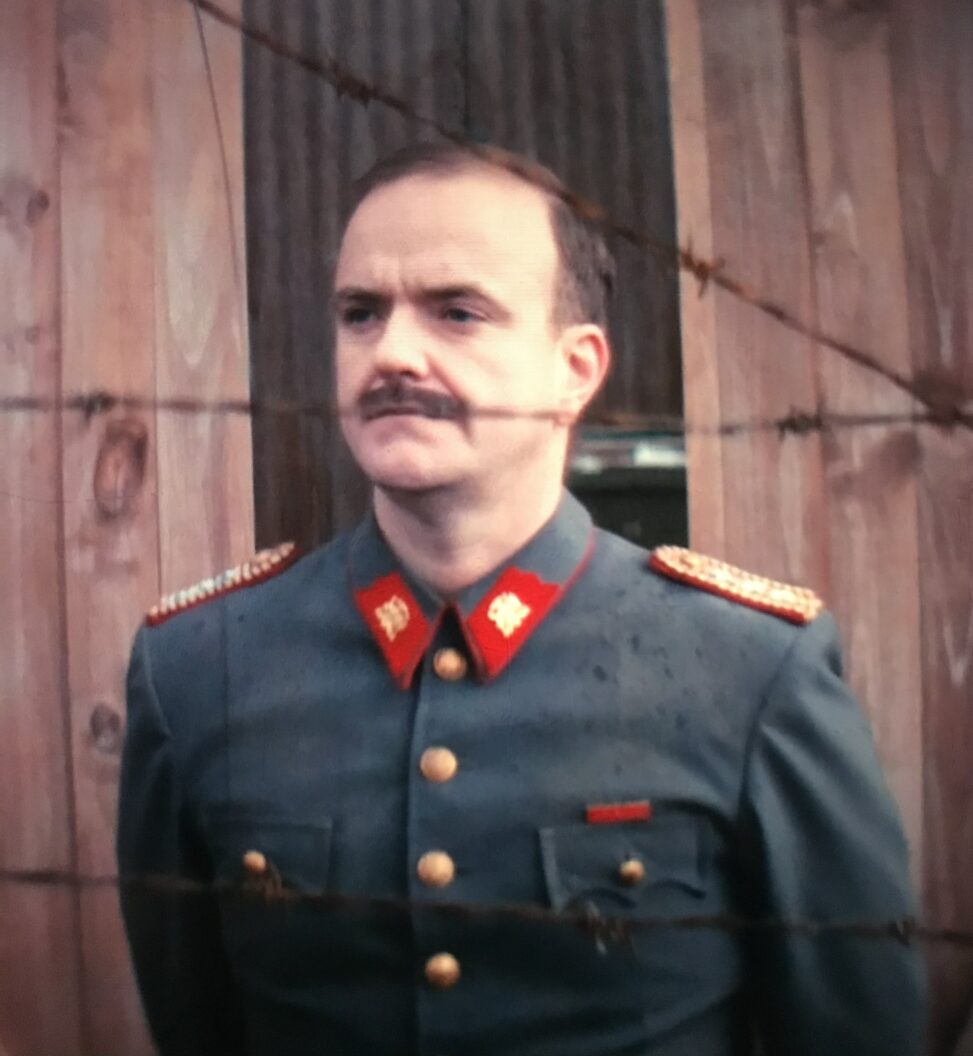Pinochet
Neruda (2016) is a film which plays with the idea of what it means to be a minor character in somebody else’s story. This metacommentary can lead to some confusion as to who counts as a minor character in the film, and raises questions about where we draw the often arbitrary line between “major” and “minor” characters. The film makes this point excellently through a very short, though in my opinion impactful, appearance of the historical figure Augusto Pinochet. The real life Augusto Pinochet would eventually go on to lead a military coup, seizing power over Chile and becoming a brutal dictator. The film’s version of Pinochet makes a brief appearance as the head guard of a concentration camp, where the Chilean government was keeping communists and (presumably) other political prisoners. He only appears in one scene, and does not even have a speaking role. Instead, he is a footnote in the narrator character’s monologue about the concentration camps.
This brief appearance is interesting when contrasted with the legacy of the real life Pinochet. It serves to reinforce the film’s goal of challenging the way we think about major versus minor characters. The historical Pinochet would almost certainly be considered a major character in Chilean history, and yet the film relegates him to about five seconds on screen, an appearance so minor it almost feels gratuitous or wasteful.
However, Pinochet’s presence in the film does serve a greater purpose in the narrative. He not only reinforces the film’s metacommentary on major and minor characters, but also serves as a recognizable face of Chilean anticommunist persecution. He is the head of the concentration camp, and so serves as the representative of the entire concentration camp system of minor characters. Under him there are numerous unnamed guards, and under the guards are numerous prisoners.
In a sense, the concentration camp system of the film embodies the collectivity Mathijs writes about in Referential acting and the ensemble cast. Mathijs writes “An actor aiming to be the ‘shipmate’ character in the ensemble cast of a pirate movie will need to assess, and then apply, notions of ‘shipmatey-ness’ already circulating among the ensemble and within the cultural sphere of the expected audience. In the construction of their part, they will strive to highlight not the authentic division of labour but the pirates’ perceived collectivity.”(Mathijs 89-96) The guards, prisoners, and Pinochet himself serve less as characters and more as a cultural shorthand for the idea of a concentration camp. The actor playing Pinochet, as brief as his appearance is, utilizes this cultural shorthand to the extreme. He stands in the familiar pose of the dictator’s own official portrait, dressed in military uniform with a sword at his hip. He brings a ‘Pinochet-ness’ to the role which makes him instantly recognizable to any audience familiar with the historical figure.
This appearance also serves the political message of the film, drawing a connection between the anticommunist persecution Neruda faces and the authoritarianism which would later come about under Pinochet’s regime. The concentration camp itself only appears a few times in the film, and the appearance of the future dictator lends a sense of historical weight to what might otherwise feel like a distraction from the plot.
Works Cited
Neruda. Directed by Pablo Larraín, 2016. Kanopy.
Mathijs, Ernest. “Referential acting and the ensemble cast.” Screen, vol. 52, no. 1, 2011, pp. 89–96, https://doi.org/10.1093/screen/hjq063.

Provide Feedback